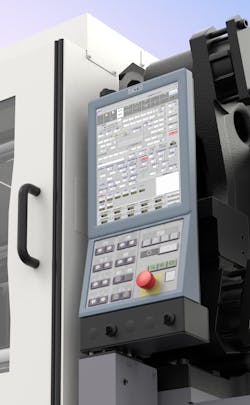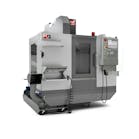Training helps Nissei customers maximize Tact IV controller's potential
Part 6 of a series on optimizing control systems.
By Bruce Adams
Nissei helps its customers get the most from their machines with in-depth training on the Tact IV controller, which is used on all the company's presses. Joe Kendzulak, senior technical adviser and instructor at Nissei’s New Jersey Tech Center, has been training customers there since 2004 and has been in the plastics industry since 1992. He teaches a three-day course called Nissei School.
Related stories: Usability, artificial intelligence guide Engel's controller developments; Arburg control features optimize molding process; Sumitomo emphasizes user-friendliness; Haitian targets Industry 4.0; Milacron controllers leverage data, iMFLUX capabilities; Wittmann Battenfeld's B8 limits downtime, improves quality
“Technology has progressed so much, and the controller is full of information now,” Kendzulak said. “It gives you alarms, tells you what you did wrong, gives you cause, action and remedies. It gives you a lot of information and is a very useful tool. In the past, you had to get a book and read about it. Now, the controller tells you what is wrong and what you should be looking at.”
Day 1 of Nissei School takes a deep dive into the Tact IV controller.
“We spend the whole first day focusing on every page and going over every single button on the controller,” Kendzulak said.
Some of the features on the main data screen include a stagnancy monitor that prevents the mold from being filled with stagnant resin, which would damage it; mold protection to detect if the mold is moving too fast; mold close acceleration; an automatic purging circuit based on materials used; a cycle display that graphs each process; a data monitoring pass/fail function to set base values; and high-precision metering control.
“The second day, I wipe out the controllers on the actual machines and make them start up the presses from zero, with all the settings wiped out,” Kendzulak said. “We have hydraulic and electric machines here, so they get to use both. We show them all the extra bells and whistles on the machines that most people don’t use. We stress that these machines have a lot more features than you normally use, but they are there to help you.”
Some of those lesser-known or lesser-used features he teaches are compression molding, coining and an optional core-pull software package. Standardization simplifies what students need to learn.
“All the machines have the same exact Tact IV controllers,” Kendzulak said. “There are a lot of interchangeable parts in the CPUs between the hydraulic and the electric machines, but we standardize on one control.”
Some customers use only the main page on the controller.
“When they come to Nissei School, we hear them say, ‘We didn’t know the machine could do that.’ We focus on the controller because it does so much for you now and gives you so much more information than in the past. It is the main tool that everybody should know.”
Operators, company owners, quality-control engineers and toolmakers can attend Nissei School. Any company that buys a Nissei press is eligible to send its employees to Nissei School.
“About 75 percent of students are operators because they benefit the most from the training,” Kendzulak said. “We want them to learn the controller.”
One feature he teaches is Pre-Pack, which maintains metering density and injection volume.
“We use the natural compression of plastic and turn a standard screw into a plunger,” Kendzulak said. “When the meter is at shot size, we pre-compress the material to generate pressure, suck it back and the pressure keeps the check ring closed. When it injects the next shot, it is a plunger and there is no deviation at the check ring. Deviation and check ring play a big part. You can’t control every shot to make the check ring close at the same spot every time. When we use Pre-Pack, we can do that because we pre-close the check ring before it injects. Micro molders like to learn about this.”
Kendzulak said he has seen two recent trends in processing and mold making.
“A lot more people are going to single machines with add-on injection units and add-on rotaries, so if they have to, they can revert back to a standard machine,” he said. “Also, more people are making their molds move now instead of rotating the clamp. If you have two shots, say a thermoplastic and a thermoset in one mold, the mold opens up and shuttles for the second shot. People are getting a lot more creative with the molds.”
Nissei also is gearing up for Industry 4.0.
“We are moving into Industry 4.0, but we haven’t made that leap yet,” Kendzulak said. “With true Industry 4.0, you can plug in any controller into any automation system and communicate.”
The company is developing a new controller called N-Constellation for Industry 4.0. No release date has been announced. Until then, Nissei offers PQ Manager, its plant monitoring system software that collects and analyzes quality and production information from as many as 100 injection molding machines.
Bruce Adams, senior staff reporter
Contact:
Nissei America Inc., Anaheim, Calif., 714-693-3000, www.nisseiamerica.com






